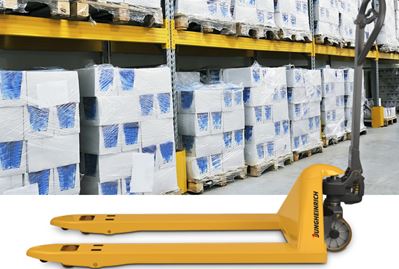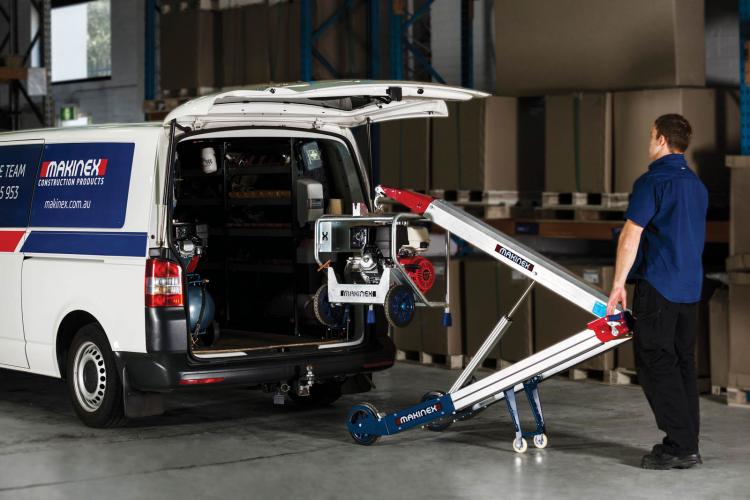Sample Daily Checklists for Powered Industrial Trucks
Hand Winch Operated Lift Trucks Handle Skids, Bales and other Commercial or Industrial Product or Material Loading Applications. Hand winch operated lift trucks provide storage for heavy loa. Vestil A-LIFT-S-EHP Adjustable Straddle Hand Winch Lift Truck, 42-1/2' Length, 43-1/4' Width, 80' Height, 350 lbs Capacity 3.8 out of 5 stars 11 $935.00 $ 935. Powered industrial trucks, commonly called forklifts or lift trucks, are used in many industries, primarily to move materials. They can also be used to raise, lower, or remove large objects or a number of smaller objects on pallets or in boxes, crates, or other containers. Amazon's Choice for hand truck lift Cosco 12222PBG1E Shifter 300-Pound Capacity Multi-Position Heavy Duty Folding Dolly, Green hand-trucks 4.7 out of 5 stars 13,628.
The following checklists are intended to assist in providing training on OSHA's powered industrial truck operator standards. They are not a substitute for any of the provisions of the Occupational Safety and Health Act of 1970 or for any standards issued by the U.S. Department of Labor's Occupational Safety and Health Administration (OSHA). OSHA wishes to acknowledge that this checklist and related graphics was developed in cooperation with the Industrial Truck Association as part of the OSHA-ITA Alliance.
The OSHA standard for powered industrial truck training [29 CFR 1910.178(l)] requires that an employer provide training to truck operators on a variety of topics. Among these topics are vehicle inspection and maintenance that the operator will be required to perform. The following checklists are being provided as part of OSHA's ongoing effort to assist employers and employees in ensuring that a safe and healthful workplace is provided. The lists serve as a guide only and may not be totally inclusive. Each type of powered industrial truck is unique and checklists pertinent to each type of vehicle should be modified accordingly. It is recommended that the manufacturer's instructions on vehicle maintenance and owner's and operator's responsibilities also be consulted. The OSHA standards for powered industrial trucks must be reviewed to ensure compliance.
There are two general types of powered industrial trucks: electric (battery) powered and internal combustion engine (gas/LPG/diesel) powered. Each of these general types has a variety of different configurations and attachments. Your workplace may have a variety of trucks that are being operated. ALL OPERATORS MUST BE TRAINED TO OPERATE ALL TYPE OF INDUSTRIAL TRUCKS THEY WILL BE OPERATING.
Daily, pre-shift inspection of powered industrial trucks is required by OSHA standards.
Depicted below are the major types of industrial trucks and some of the most common variations. The drawings of the trucks depicted below are intended to represent the typical configuration of trucks for each type. They do not include all available options, attachments or configurations.
Electric Motor Powered Industrial Trucks

Standup End Control Rider | Sitdown Rider | Narrow Aisle Reach |
Narrow Aisle High Lift Straddle | Narrow Aisle Order Picker | Narrow Aisle Sideloader Platform |
Narrow Aisle Sideloader High Lift Pallet | Narrow Aisle Turret | Narrow Aisle Low Lift Platform |
Stacker Pallet | Walkie Platform Low Lift | Walkie Pallet Low Lift |
Tractor Walkie/Rider | Walkie Pallet High Lift |
Internal Combustion Engine Powered Industrial Trucks - Gas/LPG/Diesel
Counterbalanced Forklift Gas/LPG Cushion Tire | Counterbalanced Forklift Gas/LPG/Diesel Pneumatic Tire |
Tow Tractor Gas/LPG/Diesel | Rough Terrain Forklift Gas/LPG/Diesel Vertical Mast |
Daily checklists for each type of industrial truck are available from the truck manufacturer. You may choose to use a checklist for each type of industrial truck in your workplace or compile one that can be used for any type of truck.
Refer to the owner's manual, specifications and manufacturer's recommendations to modify the checklist for trucks being operated in your workplace. Below are sample checklists for internal combustion and electric trucks. These lists can be modified to suit your workplace needs.
Operator's Daily Checklist - Internal Combustion Engine Industrial Truck - Gas/LPG/Diesel Truck
Record of Fuel Added
| Date | Operator | Fuel |
| Truck# | Model# | Engine Oil |
| Department | Serial# | Radiator Coolant |
| Shift | Hour Meter | Hydraulic Oil |
SAFETY AND OPERATIONAL CHECKS (PRIOR TO EACH SHIFT)
Have a qualified mechanic correct all problems.
| Engine Off Checks | OK | Maintenance |
| Leaks – Fuel, Hydraulic Oil, Engine Oil or Radiator Coolant | ||
| Tires – Condition and Pressure | ||
| Forks, Top Clip Retaining Pin and Heel – Check Condition | ||
| Load Backrest – Securely Attached | ||
| Hydraulic Hoses, Mast Chains, Cables and Stops – Check Visually | ||
| Overhead Guard – Attached | ||
| Finger Guards – Attached | ||
| Propane Tank (LP Gas Truck) – Rust Corrosion, Damage | ||
| Safety Warnings – Attached (Refer to Parts Manual for Location) | ||
| Battery – Check Water/Electrolyte Level and Charge | ||
| All Engine Belts – Check Visually | ||
| Hydraulic Fluid Level – Check Level | ||
| Engine Oil Level – Dipstick | ||
| Transmission Fluid Level – Dipstick | ||
| Engine Air Cleaner – Squeeze Rubber Dirt Trap or Check the Restriction Alarm (if equipped) | ||
| Fuel Sedimentor (Diesel) | ||
| Radiator Coolant – Check Level | ||
| Operator's Manual – In Container | ||
| Nameplate – Attached and Information Matches Model, Serial Number and Attachments | ||
| Seat Belt – Functioning Smoothly | ||
| Hood Latch – Adjusted and Securely Fastened | ||
| Brake Fluid – Check Level | ||
| Engine On Checks – Unusual Noises Must Be Investigated Immediately | OK | Maintenance |
| Accelerator or Direction Control Pedal – Functioning Smoothly | ||
| Service Brake – Functioning Smoothly | ||
| Parking Brake – Functioning Smoothly | ||
| Steering Operation – Functioning Smoothly | ||
| Drive Control – Forward/Reverse – Functioning Smoothly | ||
| Tilt Control – Forward and Back – Functioning Smoothly | ||
| Hoist and Lowering Control – Functioning Smoothly | ||
| Attachment Control – Operation | ||
| Horn and Lights – Functioning | ||
| Cab (if equipped) – Heater, Defroster, Wipers – Functioning | ||
| Gauges: Ammeter, Engine Oil Pressure, Hour Meter, Fuel Level, Temperature, Instrument Monitors – Functioning |
Operator's Daily Checklist - Electric Industrial Truck
Record of Fluid Added
| Date | Operator | Battery Water |
| Truck# | Model# | Hydraulic Oil |
| Department | Serial# | |
| Shift | Drive Hour Meter Reading | Hoist Hour Meter Reading |
SAFETY AND OPERATIONAL CHECKS (PRIOR TO EACH SHIFT)
Have a qualified mechanic correct all problems.
| Motor Off Checks | OK | Maintenance |
| Leaks – Hydraulic Oil, Battery | ||
| Tires – Condition and Pressure | ||
| Forks, Top Clip Retaining Pin and Heel -- Condition | ||
| Load Backrest Extension – Attached | ||
| Hydraulic Hoses, Mast Chains, Cables & Stops – Check Visually | ||
| Finger Guards – Attached | ||
| Overhead Guard – Attached | ||
| Safety Warnings – Attached (Refer to Parts Manual for Location) | ||
| Battery – Water/Electrolyte Level and Charge | ||
| Hydraulic Fluid Level – Dipstick | ||
| Transmission Fluid Level – Dipstick | ||
| Operator's Manual in Container | ||
| Capacity Plate Attached – Information Matches Model, Serial Number and Attachments | ||
| Battery Restraint System – Adjust and Fasten | ||
| Operator Protection Sitdown Truck - Seat Belt – Functioning Smoothly Man-up Truck – Fall protection/Restraining means - Functioning | ||
| Brake Fluid – Check level | ||
| Motor On Checks (Unusual Noises Must Be Investigated Immediately) | OK | Maintenance |
| Accelerator Linkage – Functioning Smoothly | ||
| Parking Brake – Functioning Smoothly | ||
| Service Brake – Functioning Smoothly | ||
| Steering Operation – Functioning Smoothly | ||
| Drive Control – Forward/Reverse – Functioning Smoothly | ||
| Tilt Control – Forward and Back – Functioning Smoothly | ||
| Hoist and Lowering Control – Functioning Smoothly | ||
| Attachment Control – Operation | ||
| Horn – Functioning | ||
| Lights & Alarms (where present) – Functioning | ||
| Hour Meter – Functioning | ||
| Battery Discharge Indicator – Functioning | ||
| Instrument Monitors – Functioning |
ALL OPERATORS MUST BE TRAINED AND EVALUATED ON THE TYPES OF INDUSTRIAL TRUCKS AND ATTACHMENTS THEY WILL BE OPERATING.
Like automobile tires, hand truck tires are filled with air. This helps them roll more smoothly over uneven surfaces and helps dissipate the heat produced by the tire’s spin.
Mini Forklift Hand Truck
But also like car tires, occasionally hand truck tires will deflate, become damaged, or otherwise need to be repaired or replaced.
Proper Tire Inflation
Adding air to hand truck tires is easy: The maximum PSI usually will be noted on the sidewall of the tire. Simply use a air compressor to add air to the tire nozzle, using either the pressure gauge on the compressor or your handheld tire gauge to tell you when you’ve added enough.

This can be done while the tire is still attached the hand truck and nine out of ten times this is the only repair you will need to make to most hand truck tires.
Tire Replacement
If the tire is worn, split or otherwise unusable, you will need to replace it. The biggest problem most businesses have is that they don’t usually have spare hand truck tires on hand. And why would they? It’s not something you typically have to replace very often.
The problem is that if your hand truck tire is flat and can’t simply be re-inflated, your hand truck is out of service until you can order a replacement tire. And depending where you order it from (and how much you are willing to pay in delivery charges), you may be without that hand truck for anywhere from a few days to a few weeks.
Helpful Tip: When ordering a replacement tire for your hand truck, get two. That way you won’t have to wait around for a replacement to arrive next time. And make sure you buy one that is compatible with your brand and model of hand truck.
Removing the Tire

In some instances, it’s only the inner tube that needs to be replaced. But in others, the entire tire may need to go. In either case, you are going to have to remove the tire from the hand truck in order to make the repair.
Lay the hand truck down on a flat surface with the package spade and truck handle facing down to form a triangle shape with the wheels of the hand truck off the ground.
If there’s an axle end cap, remove it. Then locate the cotter pin that holds the wheel on the axle and straighten the bent portion using a pair of needle-hose pliers. The use the same pliers to pull the cotter pin out.
Remove any flat washers from the axle and put them someplace where you won’t lose them. Then pull the entire tire assembly off the axle, leaving the interior flat washers where they are.
Replacing the Tire
Then simply repeat the same process in reverse with the new tire. Push the tire onto the axle, then the outside flat washers, then push the cotter pin into place and bend it back into position with the flat side resting against the wheel hub.
Forklift Lift Hand Truck
Voila! You’re back in business!
